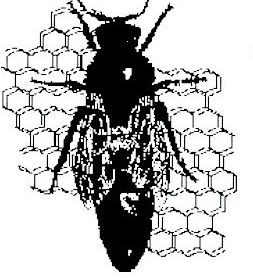

 
|
|||
Places on
HOME |
General CharacteristicsMountain Grey Caucasian BeesMt. Grey Caucasians are GENTLE. As a race, Caucasians are the most gentle bee in the world. However as with any other bee, they vary in temperament from one colony to another. We select the colonies that display the desired gentle characteristics as breeders to assure that these bees meet our high standards. Any bees that show any defensiveness are immediately removed from our breeding program to assure that these undesired characteristics are not passed on to production queens sent to our customers. Mt. Grey Caucasians are WINTER-HARDY. These bees originated in the very cold regions of Europe. For this reason, there was natural selection for overwintering ability. These bees generally go into the winter with a smaller cluster than warmer climate bees such as Italians. Therefore they use less honey during the winter than larger clusters. The queen is very frugal in her egg laying. When the incoming nectar slows down at the end of the fall honey flow, these queens slow down laying to conserve stores for the winter. Mt. Grey Caucasians are PRODUCTIVE. Queen breeders of other races of bees have over the years promoted the myth that gentle bees are lazy. Nothing could be further from the truth. These bees will work under less than ideal conditions, such as cool temperatures and light rain, that other races of bees such as Italians will not attempt. For that reason the total honey production is as great as other races of bees. Mt. Grey Caucasians are reared with QUALITY in mind. We use queenright starter/finishing colonies feed that feed the developing queens more royal jelly than queenless colonies. Because queenright colonies are raising the queens under the supersedure impulse, they do not cap the developing cells as soon. This extra day of feed before the queen cells are capped produces a larger higher quality queen. Some breeders force their cell builders to feed as many as 52 cells at one time. We put a maximum of 15 cells in each builder at one time. With an abundance of young bees to feed a small number of cells, the developing queens are much better fed and are of higher quality. When the queen cells mature, they are moved from the builder colonies to the mating nucs (nucleus colony) where the cells hatch and stay until they mate and start laying. Most breeders use what are called "baby nucs". These are miniature hives with small frames and a small number of bees. We feel that better queens are produced when you have a larger number of bees in these mating nucs. For that reason, we use a 10 frame full-depth box divided 3 ways. Each section has three 9 5/8" deep brood frames covered with bees. These nucs with a large population of bees produce larger, higher quality queens. It is much easier to judge a new queen's brood pattern under these conditions as it duplicates the frame size that the queen will be laying in under honey production conditions. We hold these young queens until they have laid long enough for the eggs to hatch into larvae. That way we can judge the brood pattern before we cage the queens. When we cage the queens for shipment to you, we inspect the queen and judge her for size and color. Off color queen are rejected and not caged. Mt. Grey Caucasians SWARM VERY LITTLE. We test potential breeder queens for tendency to swarm. We crowd a very strong colony and watch for signs of swarming such as queen cells. We select those colonies that build few or no queen cells for breeders. One common way beekeepers increase their colony numbers is to capture swarms from their own and other beekeeper's colonies. The problem with that is you have bees from colonies that tend to swarm. That breeds this undesirable characteristic into the next generation of bees. We select from those that do not swarm thus breeding this desirable characteristic into our bloodlines. Mt. Grey Caucasians are MAINTAINED FROM GENERATION TO GENERATION. We practice what we call modified line/cross breeding. We maintain two or more unrelated bloodlines independently of each other. This is called line breeding much in the same way it is done with agricultural plant crops such as corn. This produces a bee that is consistent from one year to the next. The undesirable result of linebreeding is that after several generations the bees become imbred. This results in poor queens that are superseded quickly and produce workers that are very defensive. To avoid inbreeding, production queens are the result of a cross between unrelated bloodlines. This cross is not a hybrid as the lines are not highly imbred. But it results in a bee that has a higher vigor than one bred from only one bloodline. Mt. Grey Caucasians are the BEST. Because of the Quality control we practice and the many desirable characteristics, Mt. Grey Caucasian Bees are one of the best bees on the market today. We are proud enough of our bees to put our name on them as a mark of quality. From the selection of the breeding stock, maintaining blood lines, to caging queens we strive to produce the best bees available anywhere. Thank you for your interest. We hope you have an excellent bee year.
Return to Home PageE-Mail to: sales@caucasianbreeder.com | ||
